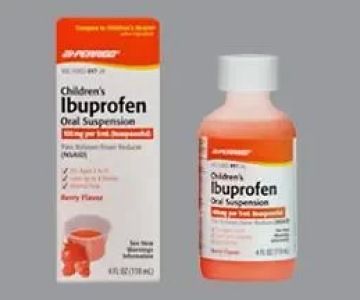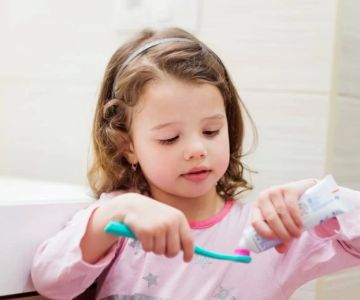Understanding the Importance of Temperature Measurement in Children
Measuring body temperature is a vital part of assessing a child's health. When children feel unwell, parents and healthcare providers rely on temperature readings to determine if there is a fever, which can indicate infection or illness. However, choosing the correct method for taking a child's temperature is crucial for accuracy and comfort. Among various techniques, oral temperature measurement is widely preferred for children beyond infancy due to its reliability and ease of use.
Accurate temperature readings help guide treatment decisions, such as when to administer medication or seek medical care. Improper methods can lead to misleading results, causing unnecessary anxiety or delayed treatment. Understanding why oral temperature is often the preferred choice empowers parents and caregivers to provide the best care.
1. Accuracy of Oral Temperature Compared to Other Methods
1.1 Oral Temperature Reflects Core Body Temperature Reliably
Oral temperature is considered a close reflection of core body temperature, offering a reliable measurement. Unlike axillary (underarm) or tympanic (ear) readings, which can be influenced by external factors like room temperature or improper placement, oral temperature provides consistent results when done correctly.
Medical professionals often prefer oral temperature for children aged 4 and above, as it aligns well with rectal temperature measurements, which are considered the gold standard but more invasive and uncomfortable. Oral readings balance accuracy with ease, making them ideal for routine checks.
1.2 Real-Life Example: Emma’s Experience with Oral Temperature
Emma, a mother of a 6-year-old in Denver, recalls how oral temperature measurement helped her quickly identify a high fever during a weekend illness. The straightforward method gave her peace of mind and enabled timely care without the distress her son experienced during ear or rectal readings.
2. Practicality and Comfort for Children
2.1 Why Children Generally Tolerate Oral Temperature Better
Oral temperature measurement is less invasive and more comfortable compared to rectal methods, especially as children grow older. It requires the child to simply place the thermometer under their tongue for a short period, which is usually tolerable for kids aged 4 and up.
Compared to ear thermometers, which can be intimidating or difficult to position correctly in young children, oral thermometers are straightforward. This ease of use encourages cooperation from children and reduces stress for both child and caregiver.
2.2 Story of Toddler Transitioning to Oral Temperature Checks
When 5-year-old Lucas transitioned from frequent ear thermometer use to oral temperature checks, his parents noticed he was much more cooperative and less fearful. This switch improved accuracy and made health monitoring a smoother experience.
3. Safety Considerations When Using Oral Thermometers
3.1 Ensuring Proper Hygiene and Usage
Using oral thermometers safely involves maintaining hygiene to prevent infection spread. Disposable probe covers or thorough cleaning between uses are essential. Parents should ensure the child understands how to hold the thermometer correctly under the tongue and keep their mouth closed during the reading.
Unlike rectal thermometers, oral thermometers pose no risk of injury, making them a safer option for at-home monitoring.
3.2 Avoiding Misuse with Eating or Drinking
For accurate oral temperature readings, children should avoid eating, drinking, or physical activity at least 15 minutes before measurement. This guideline prevents skewed results caused by recent intake of hot or cold substances.
4. Limitations of Oral Temperature and When to Use Alternatives
4.1 Not Suitable for Very Young Children
Oral temperature measurement is generally not recommended for children under 4 years old due to their inability to cooperate fully or hold the thermometer correctly. In such cases, rectal or temporal artery thermometers provide more reliable readings.
Parents should consult pediatricians to select the best method for infants and toddlers, ensuring safety and accuracy.
4.2 Situations Requiring Other Measurement Methods
Children with oral injuries, breathing difficulties, or those unable to hold the thermometer may need alternative temperature methods. Ear or temporal artery thermometers, while sometimes less accurate, offer quicker, non-invasive options in clinical settings.
5. How Healthcare Providers Recommend Using Oral Temperature
5.1 Guidelines from Pediatricians and Nurses
Healthcare professionals often instruct parents to use oral thermometers for children over 4 years and emphasize correct technique to avoid errors. They may demonstrate placement and timing during well-child visits to build parent confidence.
Routine oral temperature monitoring at home can be part of fever management plans, helping parents track symptoms and decide when to seek further care.
6. The Role of Technology in Improving Oral Temperature Measurement
6.1 Advances in Digital Oral Thermometers
Modern digital oral thermometers provide quick, accurate readings with easy-to-read displays and memory functions. Some devices even connect to smartphone apps to track temperature trends over time, assisting parents and healthcare providers in managing a child’s health.
This technology reduces guesswork and improves adherence to monitoring schedules, which is particularly helpful during illnesses or chronic conditions requiring frequent temperature checks.
Taking Action: Ensuring Accurate Temperature Checks for Your Child
Understanding why oral temperature is preferred for children and learning proper usage techniques can improve the accuracy of fever detection and enhance your child’s comfort during illness monitoring. For trusted advice and access to quality oral thermometers and health care services, visit Dentistry Toothtruth, where experts are ready to support your family’s oral and overall health needs.






 Edison Dental Arts4.0 (132 review)
Edison Dental Arts4.0 (132 review) Ridgewood Dental Associates4.0 (138 review)
Ridgewood Dental Associates4.0 (138 review) Lombardi Dentistry4.0 (358 review)
Lombardi Dentistry4.0 (358 review) Dr. David Miller DDS5.0 (1 review)
Dr. David Miller DDS5.0 (1 review) Rose & Hollander Dental Associates4.0 (45 review)
Rose & Hollander Dental Associates4.0 (45 review) Smith Orthodontics4.0 (135 review)
Smith Orthodontics4.0 (135 review) The Importance of Oral Health Education During Pregnancy for a Healthy Pregnancy
The Importance of Oral Health Education During Pregnancy for a Healthy Pregnancy Best Tips for Brushing Your Teeth Properly for Healthy Gums: Essential Techniques for Oral Health
Best Tips for Brushing Your Teeth Properly for Healthy Gums: Essential Techniques for Oral Health Why Skipping Dental Checkups Can Lead to Bigger Oral Health Problems
Why Skipping Dental Checkups Can Lead to Bigger Oral Health Problems Advantages of Porcelain Dental Restorations
Advantages of Porcelain Dental Restorations How Can Diabetes Cause Tooth and Gum Problems? Preventing and Managing Oral Health Issues
How Can Diabetes Cause Tooth and Gum Problems? Preventing and Managing Oral Health Issues Healthy Habits for Promoting Good Oral Health and Hygiene: Tips for a Healthy Smile
Healthy Habits for Promoting Good Oral Health and Hygiene: Tips for a Healthy Smile